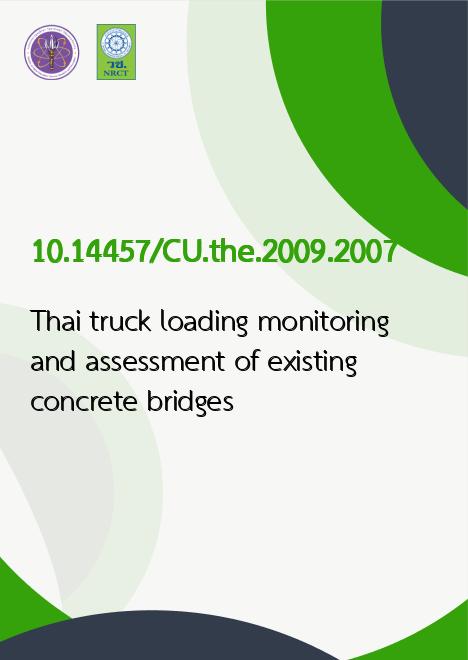
|
Thai truck loading monitoring and assessment of existing concrete bridges |
|---|---|
| รหัสดีโอไอ | |
| Title | Thai truck loading monitoring and assessment of existing concrete bridges |
| Creator | Douangmixay Dounsuvanh |
| Contributor | Phoonsak Phainsusom, Sato, Yasuhiko |
| Publisher | Chulalongkorn University |
| Publication Year | 2552 |
| Keyword | Bridges -- Live loads, Trucks -- Weight |
| Abstract | At the present decades, bridge assessment and evaluation are the vital issues in Thailand. Due to that many old bridge structures are inclined and deteriorated. In the contrast, the present truck loads are heavier than previous truck loads. To evaluate the old bridge structure, the actual truck data have to be available. Therefore, this study has mainly studied on development truck load monitoring system, and assessment for existing bridges. In Thailand, bridges have been designed by HS20-44 bridge design truck designed by AASHTO for many years, but the actual truck loads are greater than those the design truck. However, the data for local truck load has not been available to develop bridge truck load design for Thailand. Therefore, this study proposes an alternative truck load monitoring system based on the bridge weigh-in-motion (B-WIM) algorithm. The system is inexpensive, no devices exposed on the road, and it is convenient in installation and maintenance. From results of testing monitoring actual truck load, the system estimates the GVW of the truck within 6% to 10% error. Many constitutive models for nonlinear finite element method (NLFEM) for analysis concrete and reinforced concrete structures can not account for existing flaw/crack in old concrete and reinforced concrete (RC) members. In this study, the softening model for concrete and tension stiffening model for RC members are adopted to account for existing flaw/crack for analysis old concrete and RC structures. Some notched concrete and RC beams are analyzed to verify the proposed models which notch is assumed as an existing flaw. The analysis results of these examples are very close to the test results. To apply the proposed models which existing flaw/cracks are accounted, three concrete slab bridges have been analyzed by 3D NLFEM. The analysis results obtained from the proposed models have then compared to truck test results and to general NLFEM results. The results obtained from the proposed models are closed to the test results, while the results by general NLFEM are much less than those of the test results. After that, two concrete slab bridges are continued to analyze evolution their capacity using the proposed models and using maximum truck load from monitored data. From the analysis results, the behavior and capacity of the bridges can be obtained reasonably which bridge capacity obtained from the proposed models is less than those from general NLFEM and higher than those from simplify method of AASHTO |
| URL Website | cuir.car.chula.ac.th |